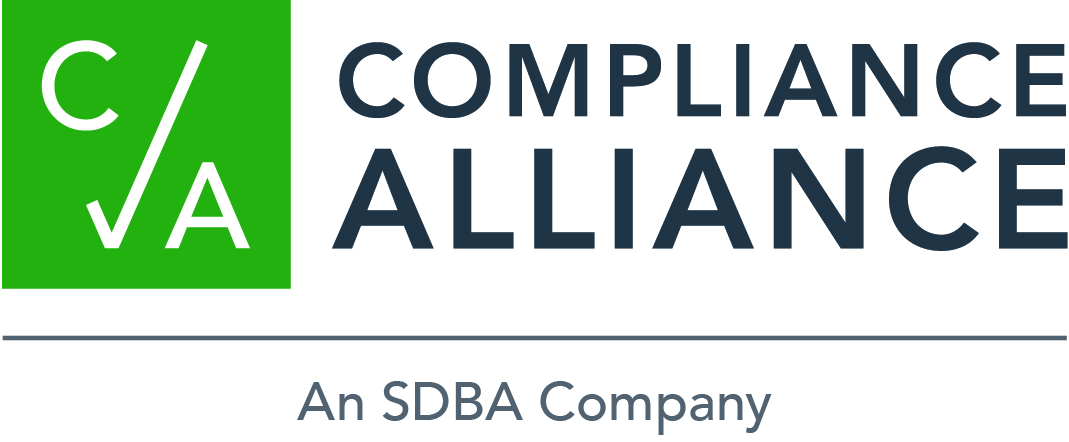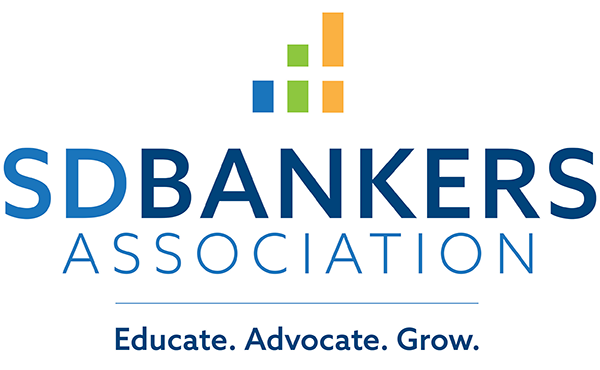Weathering the ADA Website Compliance Storm
It is believed that more than 40 percent of community banks have received a demand letter from plaintiff law firms. This latest effort in the wave of digital accessibility lawsuits puts financial institutions in the crosshairs.
SBS Cybersecurity will hold the free webinar Hacker Hour: Weathering the ADA Website Compliance Storm on Wednesday, March 29, 2 p.m. CDT
This SBS webinar will outline the history of this issue, discuss the requirements around ADA compliance and provide the best practices in approaching website accessibility projects.
Learn more and register.
Applications Being Taken for Graduate School of Banking at Colorado
The Graduate School of Banking at Colorado's capstone program is a 25-month graduate school of banking. GSBC's 67th annual school session will be held July 16-28, 2017, at the University of Colorado in Boulder, Colo.
The school's community banking curriculum combined with endless networking opportunities makes GSBC a once-in-a-lifetime experience guaranteed to take banking careers to the next level.
Applications are recommended by April 30 as seats are subject to availability. Learn more and register.
 Question of the Week Question of the Week
As bankers, we always here about fair lending and “redlining." What factors are considered in a redlining review?
Answer: Typically, since the redlining review isn’t completely specific in exactly what is reviewed by regulators during the course of the redlining review, we strongly encourage your monitoring and audit to evaluate whether the bank's lending in majority-minority tracts is similar to that of other lenders in the reasonably expected market area. However, a full review of the bank's practices and processes in the lending department is necessary to determine whether a problem exists.
As noted in the regulators procedures, other potential risk factors for redlining include: irregularly shaped Community Reinvestment Act assessment areas that fail to comply with Regulation BB and that exclude minority areas; branching strategies and expansion plans that are unfavorable to minority neighborhoods; marketing strategies that exclude minority geographies; and complaints about redlining by consumers or community advocates.
Not a Compliance Alliance member? Learn more about membership with Compliance Alliance by attending one of our live demos:
Compliance rules and regulations change quickly. For timely compliance updates, subscribe to Compliance Alliance’s email newsletters.
Compliance Alliance offers a comprehensive suite of compliance management solutions. To learn how to put them to work for your bank, call 888.353.3933 or email.
Upcoming Events
View all SDBA events
Advertising Opportunity
Learn more about sponsoring the SDBA eNews.
Questions/Comments
Contact Alisa DeMers, SDBA, at 800. 726.7322 or via email.
|
Sen. Rounds to Bankers: 'It Takes You' to Bring Change
Senate Banking Committee member Mike Rounds (R-S.D.) Tuesday urged bankers at ABA’s Government Relations Summit to make clear to their lawmakers the real-world consumer impact of regulations. “Send the message time after time: this is about consumers,” he said as attendees prepared to head to Capitol Hill.
As a lead sponsor of the ABA-advocated TAILOR Act, which would require more nuanced tailoring of regulations to different kinds of banks, Rounds emphasized the cost of overregulation, noting that all regulation costs $1.9 trillion each year--“half a trillion more than total personal income tax receipts”--which comes back to consumers through higher prices and reduced services.
When asked what it will take to advance the TAILOR Act, Rounds replied that “it takes you, face-to-face. You have to be involved. The problem will not go away until you actively participate and send the hometown message to your senators and representatives, here and at home.”
On a related note, the ABA is urging bankers to share true, specific stories that illustrate how laws and regulations have hindered banks from serving their customers. ABA will compile the results and share them anonymously with members of Congress as they work on legislative proposals for regulatory relief. Take the survey now.
Nichols Leads Grassroots Call to Action
During a first-ever livecast from the ABA's Government Relations Summit on Tuesday, ABA President and CEO Rob Nichols led a grassroots call to action that saw nearly 1,000 participants send a total of more than 2,400 letters to members of Congress. The grassroots message greeted Congress before the Summit attendees headed up to Capitol Hill for hundreds of meetings.
Nichols also provided an update on ABA’s advocacy goals, including the Blueprint for Growth and the Power Up campaign. "The ultimate in political engagement goes beyond building relationships with your lawmaker to actually becoming one,” Nichols said, discussing ABA’s recently announced Candidate School, which will take place in September. “When it’s time to set banking and economic policy, nothing beats real-world banking experience.” Watch the livecast recording.
ABA Releases Social Media Guide for 'America's Banks' Campaign
To help bankers highlight the contributions they make to improving their customers' lives and serving their communities, ABA has released a new social media guide for the America's Banks campaign. Using the hashtag #AmericasBanks on Twitter, Facebook, LinkedIn and Instagram, bankers can advocate for the industry, reach current and potential customers and enhance the reputation of banks. The free social media guide provides simple tips, sample posts and shareable graphics for the major social media platforms. Access the guide.
Top White House Economist: Consumer Choice, Agency Staffing Are Priorities for Trump Team
The Trump administration over the next several months will conduct a thorough review of the U.S. financial regulatory system and the Dodd-Frank Act to determine what changes are needed, said Mark Calabria, chief economist for Vice President Mike Pence, Tuesday at the ABA’s Government Relations Summit. Calabria gave an overview of several principles that were included in President Trump’s recent exceutive order calling for the review.
One priority for the Trump team will be to protect consumer choice. “All too often, bureaucrats in Washington have tried to limit consumer choices, believing themselves to be better informed” about what’s best for the consumer, Calabria said. “In many cases, regulators have done so in a manner inconsistent with the language of Dodd-Frank,” he added, such as certain CFPB rulemakings that impose price ceilings or interest rate caps. He also pointed out that many CFPB actions, such as its arbitration rulemaking, appear more calculated to benefiting the plaintiffs’ bar than helping consumers.
The administration is also emphasizing the importance of staffing at the regulatory agencies, Calabria said, adding that “when it comes to regulation, personnel is policy.” The Trump administration is working quickly to fill open positions at the regulatory agencies, particularly those directly under the control of the president, and Calabria noted that “since so much of the Obama era financial regulation was done through guidance, that part… can be quickly erased once we have new regulators in place.”
In a Q&A session following his remarks, Calabria said that the administration is also forming a group to determine the best way forward for Fannie Mae and Freddie Mac. “Our objective is ‘never again,’” he said. “We don’t want to be in a situation where we have to put tens of billions [of dollars] into these entities or their successors.”
DOJ Reverses Position on CFPB Structure in Amicus Brief
In an amicus brief filed in the case of PHH Mortgage v. Consumer Financial Protection Bureau last Friday, the Department of Justice reversed its position on the constitutionality of the CFPB’s structure, asserting that the Bureau’s structure with a single director removable only “for cause” should be invalidated.
This anticipated move by the Trump administration is the latest development in this closely watched case, which arose in 2015, when Cordray overruled an administrative law judge’s recommendation for a $6.5 million fine against mortgage lender PHH for allegedly requiring unlawful kickbacks from mortgage insurers in violation of the Real Estate Settlement Procedures Act.
Last month, the full D.C. Circuit Court of Appeals agreed to hear the case, vacating an earlier ruling by a three-judge D.C. Circuit panel finding the structure unconstitutional and allowing the director’s removal not just “for cause” but at the president’s discretion--thus preventing President Trump from removing current director Richard Cordray before his term expires in 2018.
Oral arguments in the “en banc” review of the case will be heard by the D.C. Circuit on May 24. ABA will continue to monitor the case as it progresses. Read the amicus brief. For more information, contact ABA's Jonathan Thessinor Thomas Pinder.
ABA Advocates for Stable Postal Rates
In a comment letter to the U.S. Postal Regulatory Commission on Monday, ABA advocated for maintaining stable postal rates based upon the Consumer Price Index. Given that the banking industry is one of the largest users of the Postal Service, ABA emphasized that its members are committed to stable pricing and common-sense postal reform that would allow the USPS to continue operating in an efficient, self-sustaining and affordable manner.
ABA’s letter comes as part of the PRC’s 10-year review of the rate system. ABA pointed out that the current system is working, with the Postal Service generating $610 million in operating profits in 2016, and urged the PRC to keep the current rate structure in place.
However, the association did recommend that the USPS improve workshare pricing--that is, discounts offered to mailers that perform activities that reduce the Postal Service’s cost. Providing greater discounts could help lower the effective cost of mail, and in turn allow mail to remain an attractive, affordable option for customer communication. Read the comment letter.
|
|


